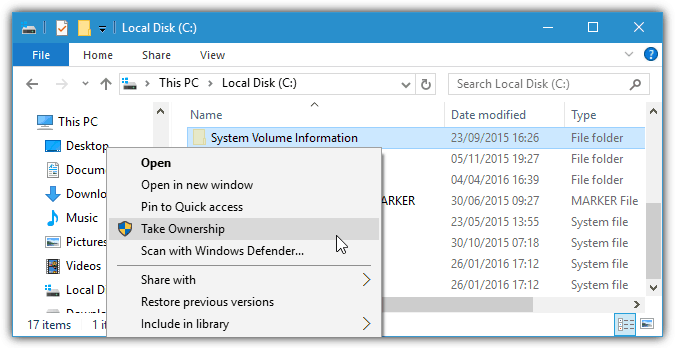Taking Ownership is assuming ownership of an object – usually a file or a folder – on an NTFS volume and thereby gaining the right to share the object and assign permissions to it. The user who creates a file or folder on an NTFS volume is the owner.
To take ownership of a file or a folder that you do not own, you must have one of the following:
- Membership in the Administrators local group
- NTFS full control permission on the object
- NTFS special permission O (taking ownership) on the object
- NTFS special permission P (change permission) on the object, so that you can give yourself O permission

Ownership can not be assigned
Ownership can be taken, but it cannot be assigned.
Moving and copying protected files
Moving and copying NTFS protected files is similar to moving and copying a compressed file. When you copy a protected file to a folder on the same, or a different volume, it inherits the permissions of the target folder.
However, when you move a protected file to a different location on the same volume, the file retains its access permission setting as though it is an explicit permission.
When data is moved within the same volume, the data is not actually relocated, the pointer to it is merely changed and that is why it retains the ACL (Access Control List).
Troubleshooting access to files and shared folders
A problem with a user accessing shared folders is often caused by underlying network connectivity problems. Make sure you check basic network connectivity first, before looking at NTFS permissions.
Then check:
- Windows shares allowing minimum access
- User rights recently denied to groups
- Permission changes assigned to parent folders
In a large environment with many users and groups, it is important to maintain a structured user and group design and folder hierarchy.